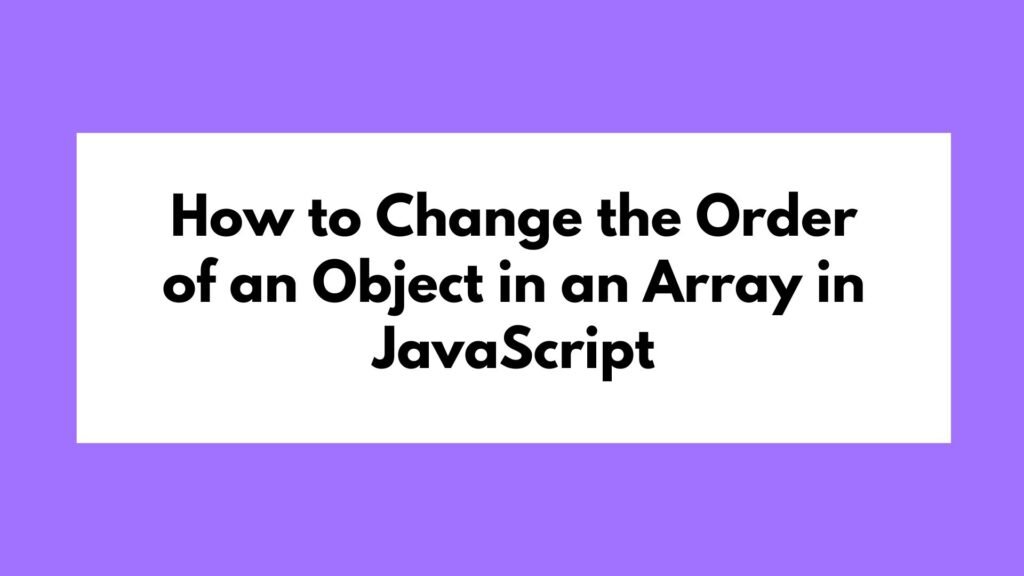
Splitting an array into smaller chunks is a common task in JavaScript, especially when you need to process or display data in manageable parts. This guide will walk you through different methods to split an array into chunks in JavaScript, along with explanations and examples.
function chunkArray(array, size) {
let result = [];
for (let i = 0; i < array.length; i += size) {
result.push(array.slice(i, i + size));
}
return result;
}
let array = [1, 2, 3, 4, 5, 6, 7, 8];
let chunks = chunkArray(array, 3);
console.log(chunks); // [[1, 2, 3], [4, 5, 6], [7, 8]]
- Purpose: Learn how to split an array into smaller chunks in JavaScript.
- Common Methods:
- For loop for manual chunking.
- Array slicing for more concise code.
Methods on How to Split an Array into Chunks in JavaScript
In JavaScript, you might want to split an array into smaller arrays (chunks) when working with large datasets, paginating data, or simply organizing information into smaller, more manageable pieces. There are several ways to achieve this, each with its own benefits depending on the situation.
Using a For Loop
A common and straightforward way to split an array into chunks is by using a for loop. This method allows for complete control over the process, making it flexible for various use cases.
Example 1: Chunking with a For Loop
function chunkArray(array, size) {
let result = [];
for (let i = 0; i < array.length; i += size) {
result.push(array.slice(i, i + size));
}
return result;
}
let array = [1, 2, 3, 4, 5, 6, 7, 8];
let chunks = chunkArray(array, 3);
console.log(chunks); // [[1, 2, 3], [4, 5, 6], [7, 8]]
Explanation:
chunkArray(array, size): Defines a function that splits an array into chunks.for (let i = 0; i < array.length; i += size): Iterates through the array, incrementing by the chunk size.array.slice(i, i + size): Extracts a chunk of the array from the current indexitoi + size.result.push(array.slice(i, i + size)): Adds each chunk to the result array.console.log(chunks): Outputs the array of chunks.
Using Array Slice Method
The slice() method can be used in conjunction with a loop or other array methods to create chunks. This approach is often more concise than using a for loop directly.
Example 2: Chunking with Array Slice
function chunkArray(array, size) {
let chunks = [];
for (let i = 0; i < array.length; i += size) {
chunks.push(array.slice(i, i + size));
}
return chunks;
}
let array = [1, 2, 3, 4, 5, 6, 7, 8];
let chunks = chunkArray(array, 2);
console.log(chunks); // [[1, 2], [3, 4], [5, 6], [7, 8]]
Explanation:
array.slice(i, i + size): Extracts a chunk of the array, making it easy to split into smaller arrays.for (let i = 0; i < array.length; i += size): Iterates through the array with a step of the chunk size.chunks.push(): Adds each sliced chunk to the chunks array.console.log(chunks): Logs the resulting array of chunks.
Using reduce() Method
The reduce() method offers a functional approach to chunking an array. This method is particularly useful for those who prefer a more declarative style of programming.
Example 3: Chunking with reduce()
function chunkArray(array, size) {
return array.reduce((acc, _, index) => {
if (index % size === 0) acc.push(array.slice(index, index + size));
return acc;
}, []);
}
let array = [1, 2, 3, 4, 5, 6, 7, 8];
let chunks = chunkArray(array, 3);
console.log(chunks); // [[1, 2, 3], [4, 5, 6], [7, 8]]
Explanation:
array.reduce(): Iterates over the array, accumulating chunks.index % size === 0: Checks if the current index is a multiple of the chunk size.acc.push(array.slice(index, index + size)): Adds a new chunk when the condition is met.return acc: Returns the accumulated array of chunks.
Handling Edge Cases
Handling edge cases ensures that your chunking function works correctly under all conditions. Here are some common scenarios:
- Empty Arrays: If the input array is empty, the function should return an empty array.
let emptyArray = [];
let chunks = chunkArray(emptyArray, 2);
console.log(chunks); // []
- Chunk Size Larger Than Array: If the chunk size is larger than the array, the entire array should be returned as a single chunk.
let smallArray = [1, 2];
let chunks = chunkArray(smallArray, 5);
console.log(chunks); // [[1, 2]]
- Non-Divisible Array Length: If the array length is not perfectly divisible by the chunk size, the last chunk should contain the remaining elements.
let unevenArray = [1, 2, 3, 4, 5];
let chunks = chunkArray(unevenArray, 2);
console.log(chunks); // [[1, 2], [3, 4], [5]]
Conclusion
Splitting an array into chunks is a useful technique in JavaScript for managing large datasets or structuring data for specific needs. Whether you prefer using a for loop, slice(), or the reduce() method, each approach offers its own advantages. Handling edge cases ensures your function remains robust, regardless of the input array’s size or content. Understanding these methods allows you to choose the most suitable one for your specific use case, making your code more efficient and maintainable.


